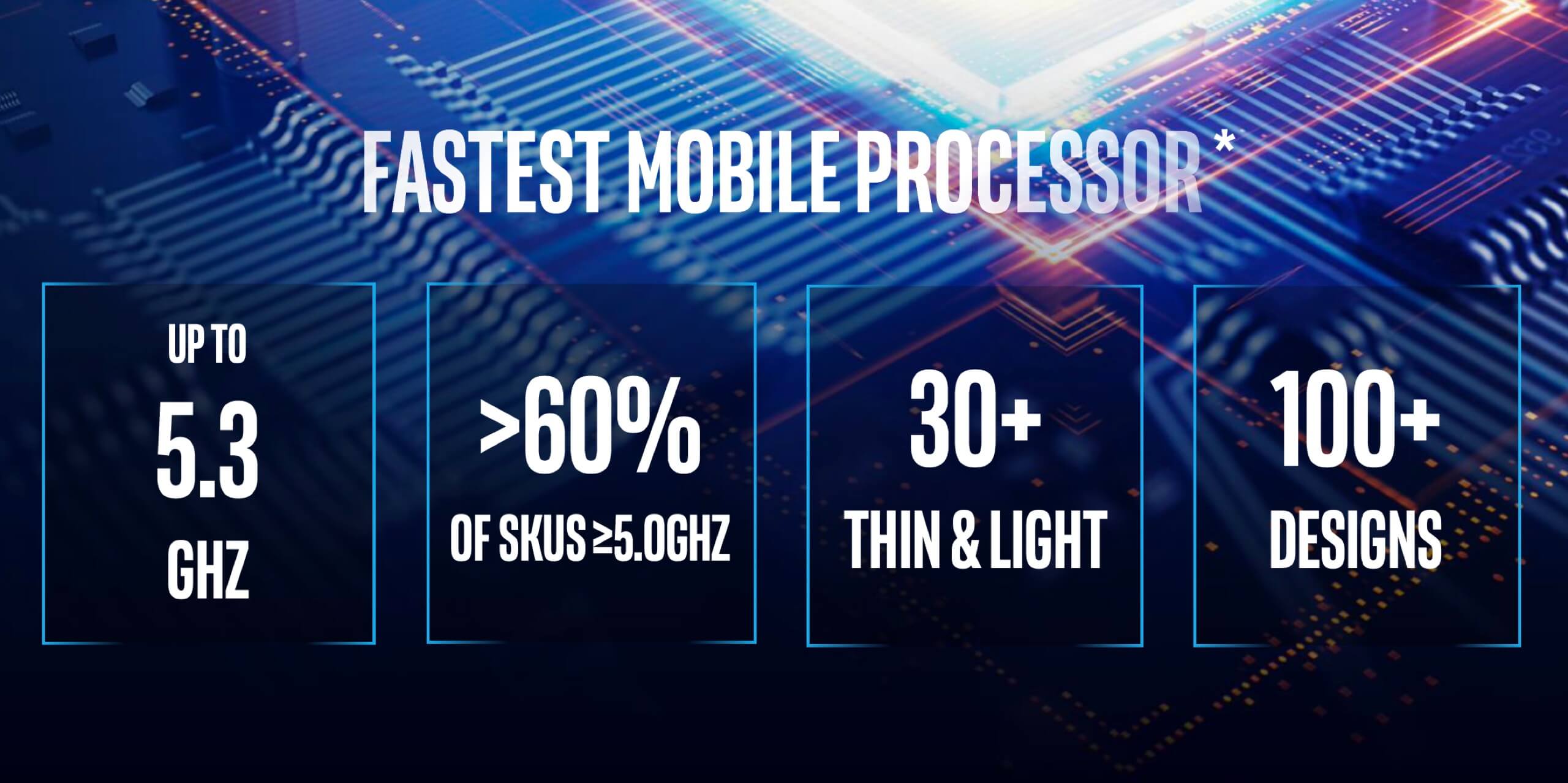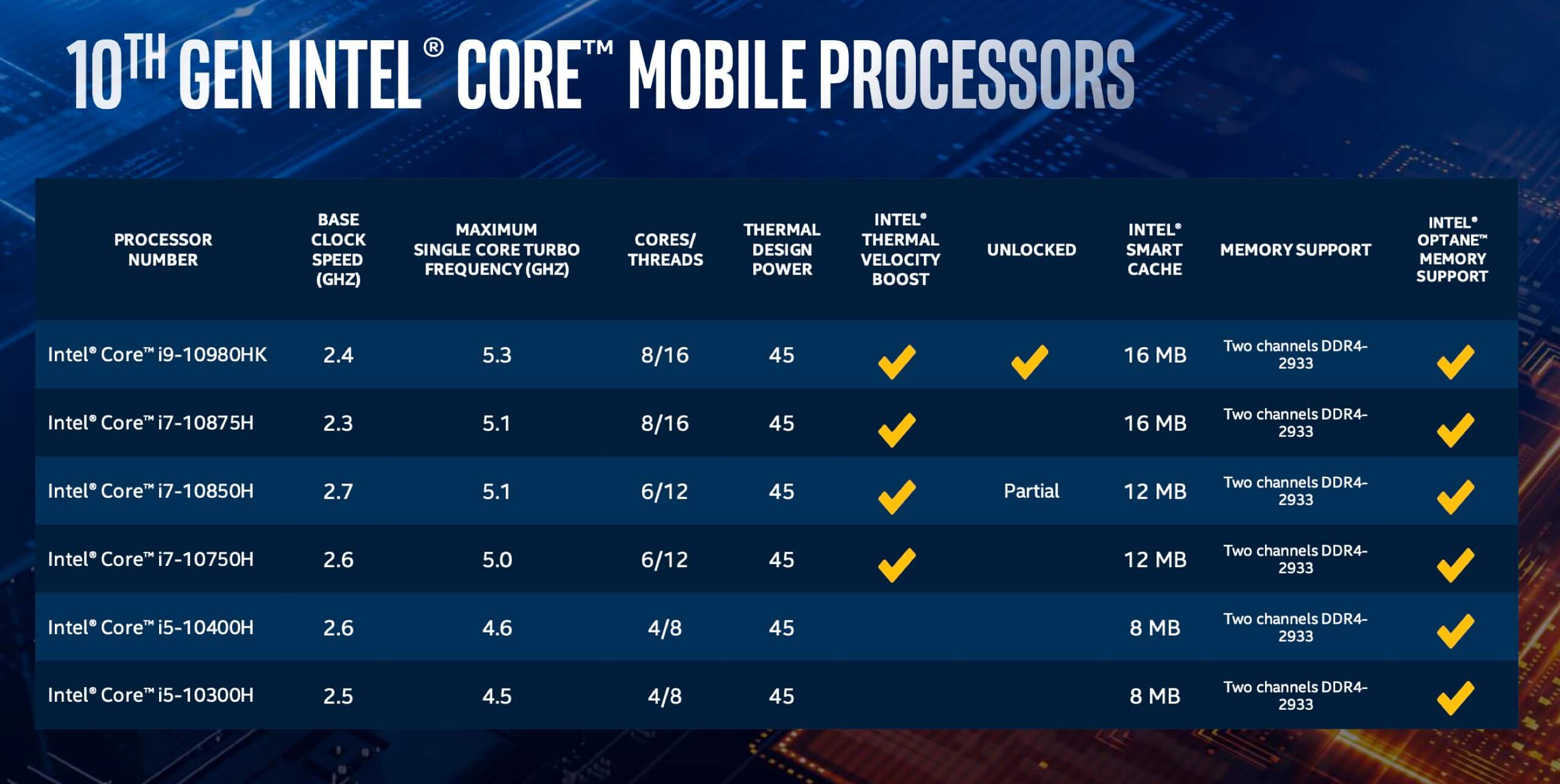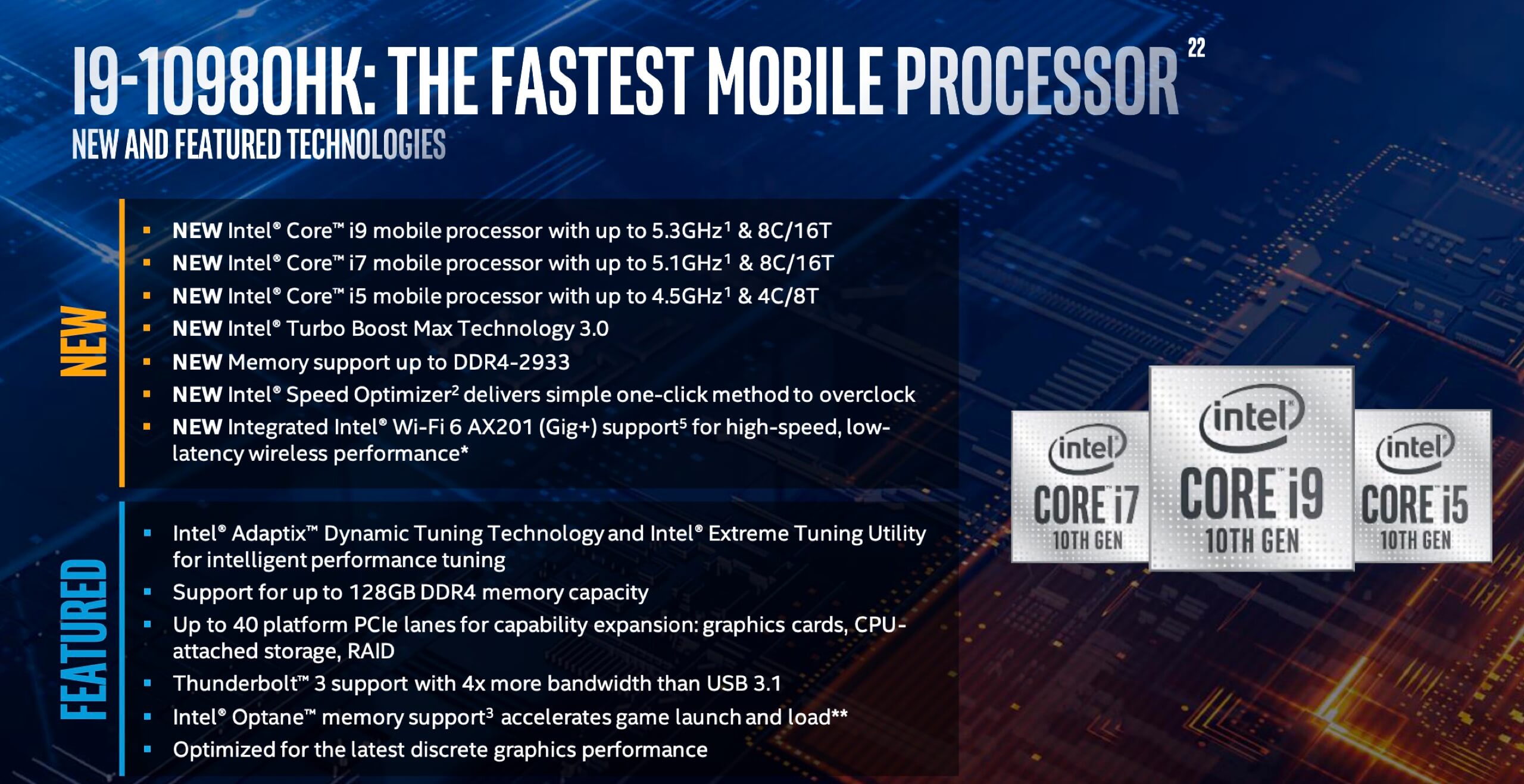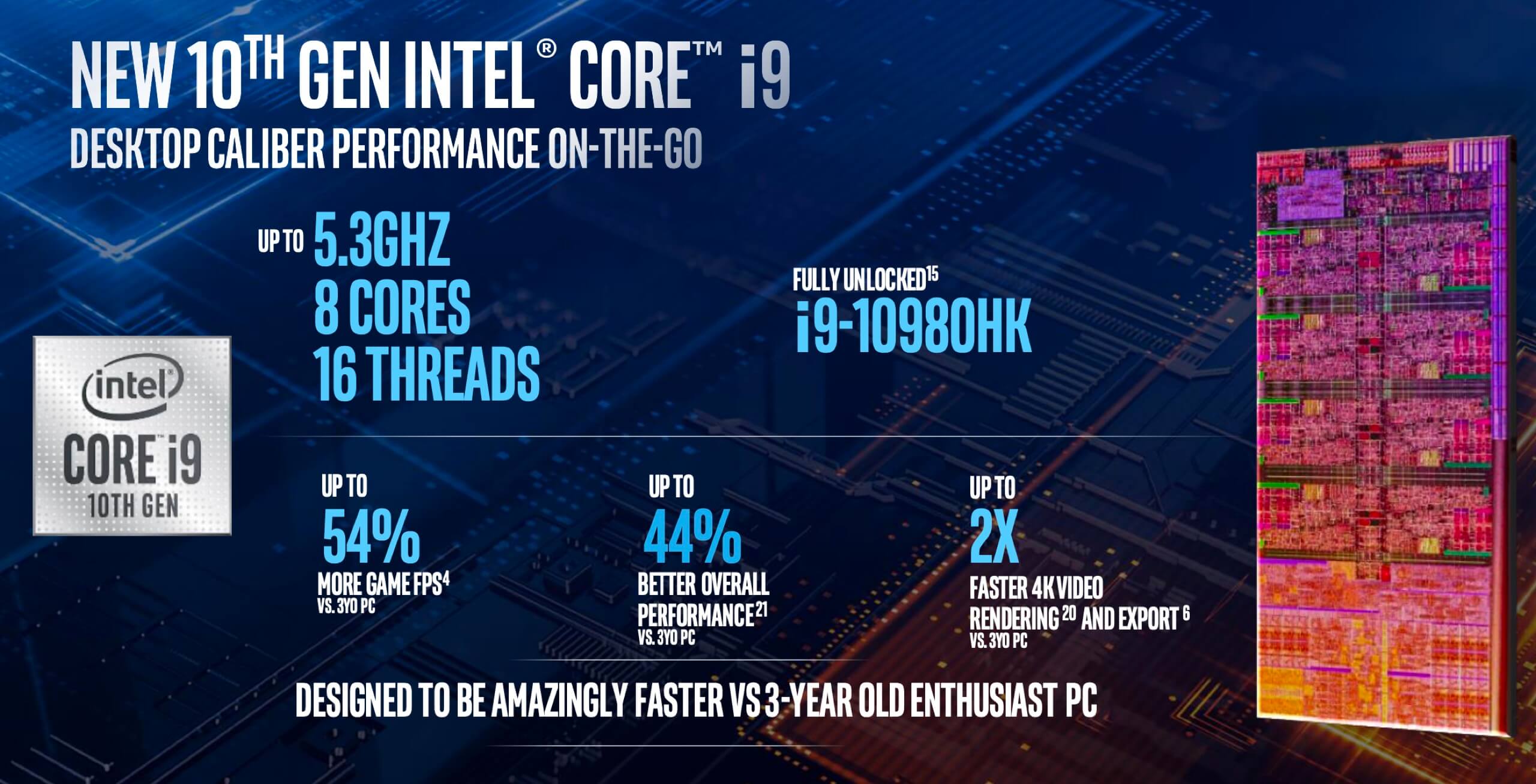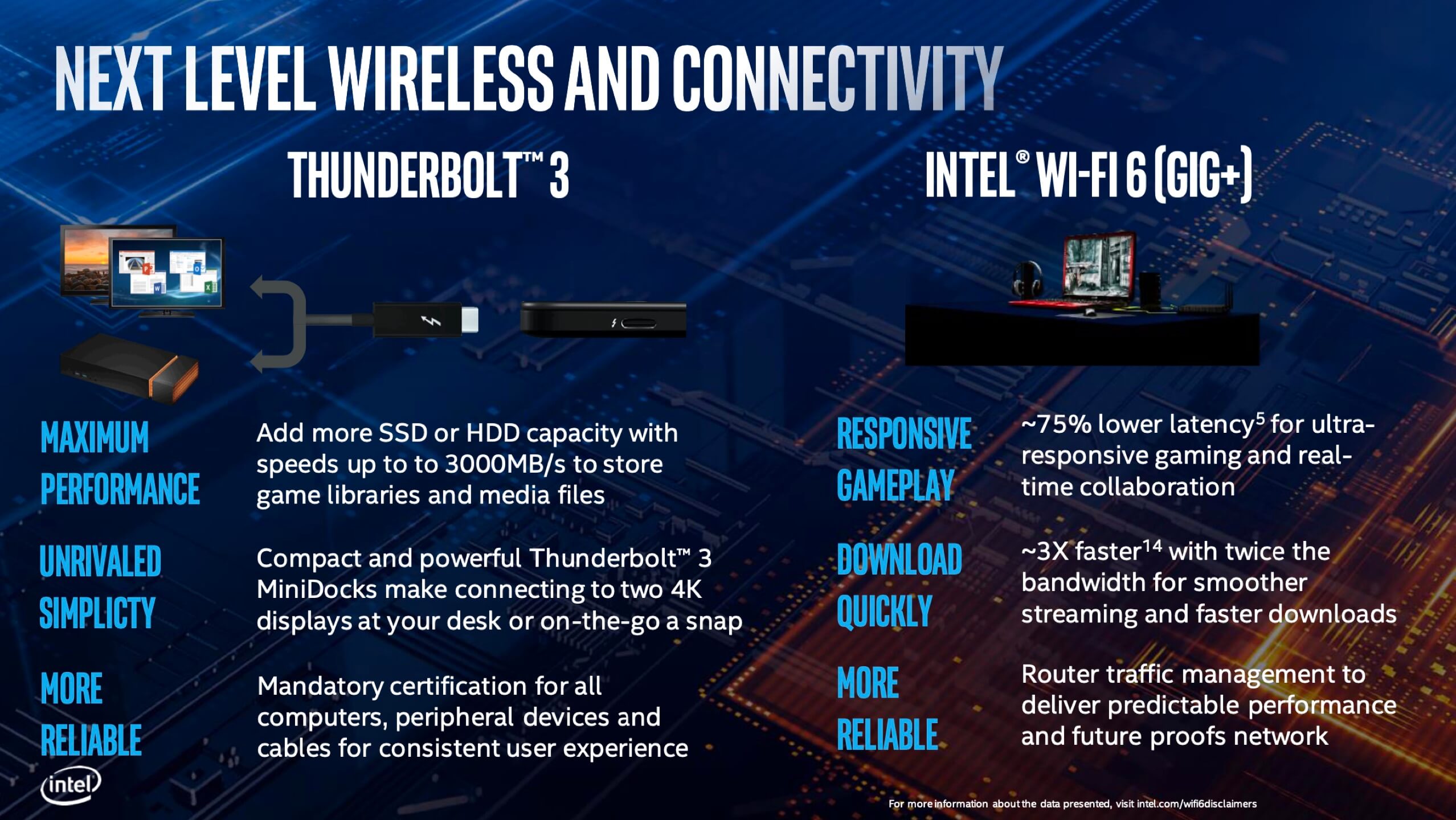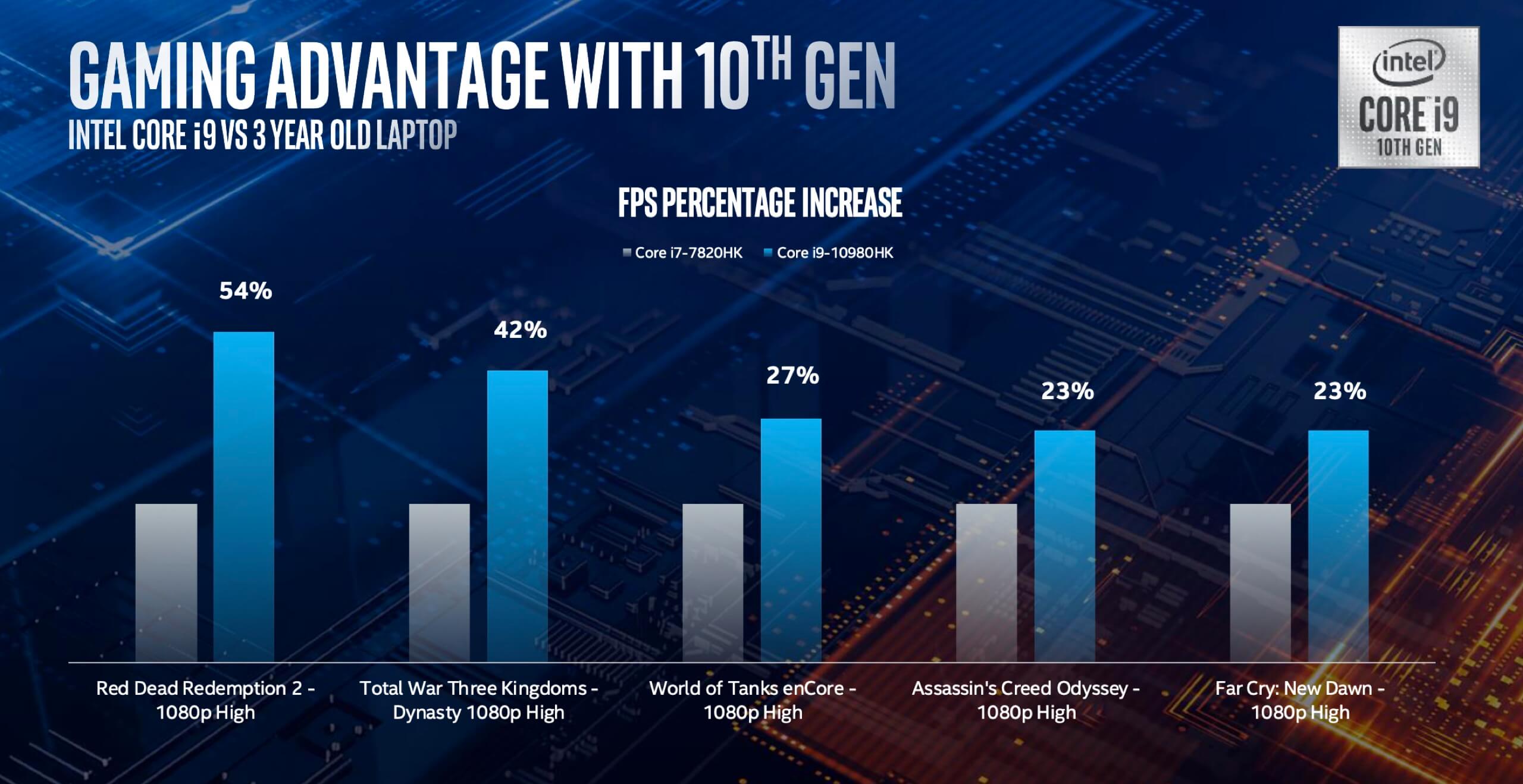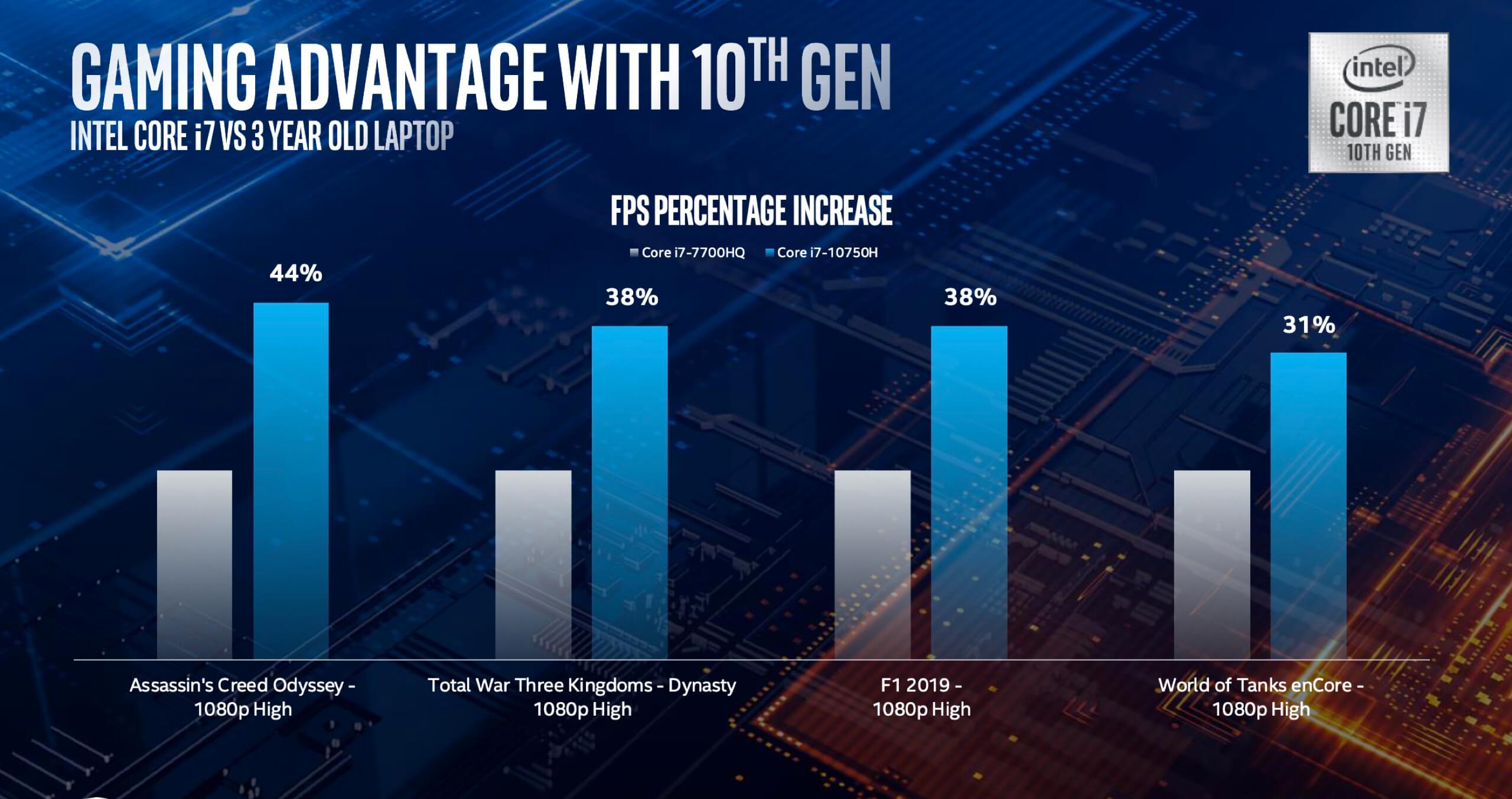The big picture: Intel is launching today the Core 10th-gen Comet Lake H-series CPUs for high-performance productivity and gaming laptops. We think this is going to be a particularly interesting launch because AMD have aggressively targeted the same segment with Ryzen Mobile 4000. We have already tested one of AMD’s H-series mobile CPUs and know what they’re capable of, so now it’s Intel’s turn to respond.
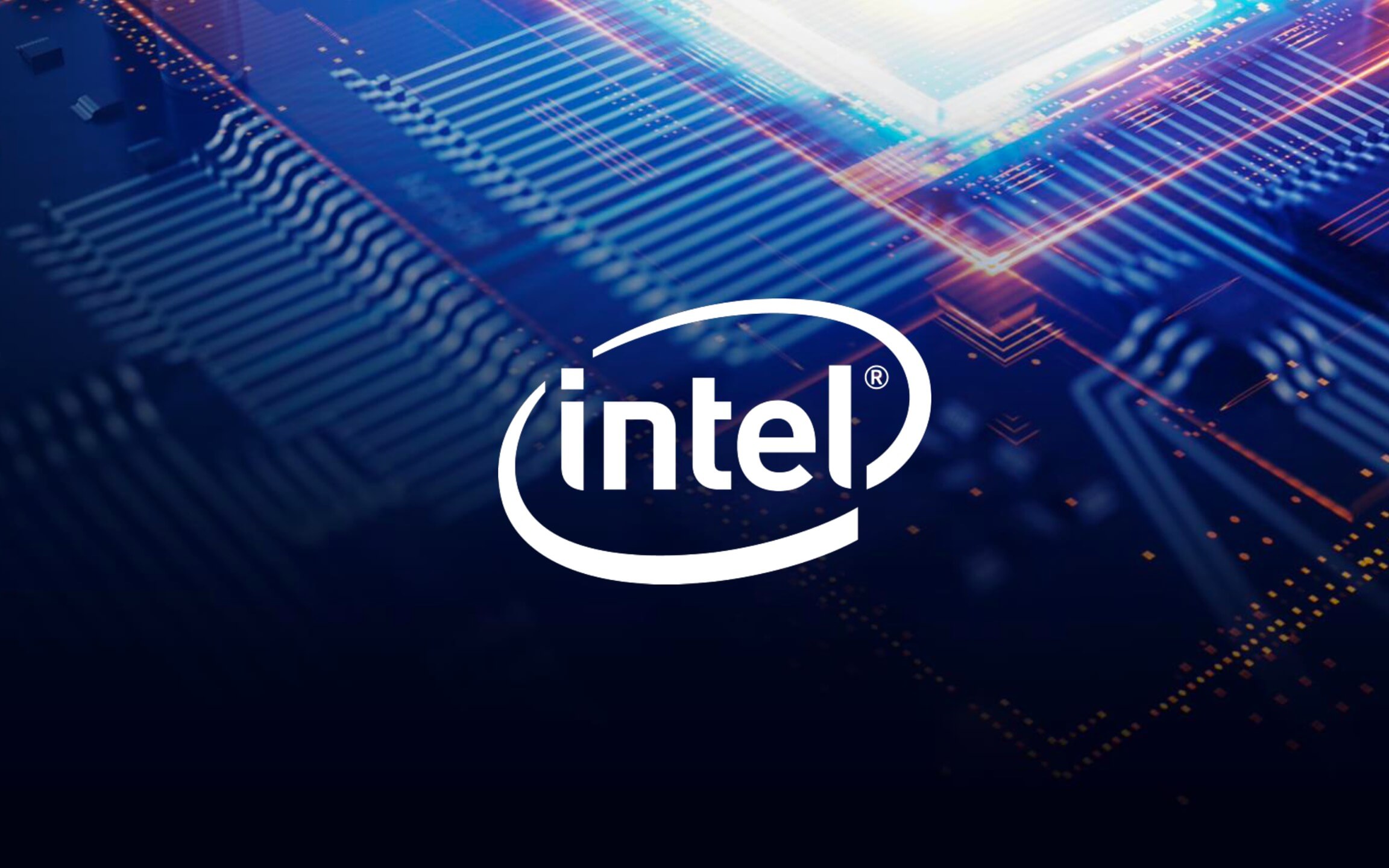
We’ve already seen Comet Lake U-series come to market last year targeting the ultraportable space, so this is just rounding out Intel’s line-up with 45W parts. As this is Comet Lake, we are still getting 14nm parts with essentially the same architecture as Skylake but with a few tweaks, as expected.
The big one is the introduction of a new 8-core processor into the Core i7 range. The Core i7-10875H essentially takes what Intel was offering previously with the Core i9-9880H, but brings it down from the expensive Core i9 tier to the more mainstream Core i7 family.
We don’t have unit pricing on the new parts just yet but as an example, the customer price for a 9880H was $556, compared to $395 for the six-core 9850H and 9750H. With 8 cores now in the Core i7 line-up, it should be cheaper for OEMs to offer such a part. Laptops that previously used the Core i7-9750H should be getting a Core i7-10875H this generation, for around the same retail price everything else being equal.
Outside of the 10875H, most of the other CPUs are minor revisions to what we had previously. The Core i5 line-up remains at 4 cores and 8 threads, there are still two other Core i7 processors offering 6 cores and 12 threads, while at the top of the stack is the Core i9-10980HK continuing to offer the best 8 core performance in this line-up with the highest clock speeds in an unlocked package.
Intel is touting single-thread performance a lot and how they’re pushing clock speeds up with this 10th generation. You’ll see across the line-up that we have at least 5.0 GHz single core Turbos for the Core i7 line and up. However, there are some caveats that make these clock speed figures less impressive than they might appear.
Take the Core i7-10750H, for example. There’s been no change to the base clock, it still sits at 2.6 GHz. The boost clock has jumped up to 5.0 GHz on paper from 4.5 GHz, but some of that is down to Intel’s Thermal Velocity Boost which is now available in Core i7 processors.
This means the 5.0 GHz boost clock figure will only be achievable when the CPU is running under a certain thermal threshold, which Intel told us was 65C. Between 65C and 85C the maximum available turbo clock will drop one notch, and then above 85C it will drop another notch. The end result is under stress – and let’s not forget that lots of H-series laptops run hot – boost clocks will top out at 4.8 GHz, possibly 4.9 GHz if you get a good cooler. This is a single-digit percentage improvement over the 9750H’s maximum clock.
Similar story right at the top of the stack with the Core i9-10980HK. A 2.4 GHz base clock on 4 cores is identical to what Intel were offering with the i9-9980HK. However now we get a 5.3 GHz Thermal Velocity Boost, up from 5.0 GHz. Intel says above 85C, that drops to 5.1 GHz, which is 300 MHz higher than the non-Thermal Velocity Boost numbers on the 9980HK. Intel also told us the chip has a 4.4 GHz all-core turbo, up from 4.2 GHz with the previous gen.
Then for the 10875H we’re basically getting a Core i9-9880H as we mentioned, with a slightly higher turbo frequency provided by Thermal Velocity Boost, ~300 MHz higher in the best case. And this remains the same for the rest of the parts. If we’re lucky we’re seeing a 100 MHz higher base clock and 400 MHz higher turbo clock, which at the absolute best is a 10% improvement.
The rest of these processor specs remain similar to previous generations, too. Cache sizes are kept the same at 8MB for quad-cores, 12MB for hexa-cores and 16MB for octa-cores. Memory support has received a small bump, from DDR4-2666 to up to DDR4-2933 support. Other new features are partially integrated Wi-Fi 6 support, and a one-click overclock method for unlocked CPUs.
Intel has also disabled undervolting on 10th-gen CPUs in response to a vulnerability called “PlunderVolt”. Undervolting was a common way for users to get more performance out of their laptop CPUs. You turned the voltage down, this lowered power at a given frequency, so you can get more performance in the same power envelope. This won’t be possible with these new processors.
Bottom line is we’re getting a minor clock speed bump to existing parts, as well as the introduction of a new 8-core part into the Core i7 series.
Intel’s performance figures for this new generation mostly focus on comparing 10th-gen to 3-year-old 7th-gen configurations. This does have its place given a lot of people will be making that sort of upgrade, but omitting performance compared to the previous generation is disappointing. Oh, and take note Intel, on a slide discussing gaming performance between 7th to 10th gen systems, the GPUs used for each system are substantially different, pitting a GTX 1080 versus an RTX 2080. That’s not very useful data.
Based on the information we have today, we don’t feel this is a particularly strong response to AMD’s Ryzen Mobile 4000 series, which we know is significantly faster than Intel’s existing 8-core mobile processors in most workloads and massively more efficient. We’ll have to see how these chips perform in benchmarks -- coming up soon when embargos expire -- but on paper it doesn’t look like it’ll be enough to compete.
Intel has pulled what’s possibly the best move they could in bringing 8 cores down to Core i7 to match the 8 cores AMD offers in that segment, and are testing the waters with a huge 5.3 GHz on their top end part. Intel has dominated the laptop space for a long time, they have the relationships and the clout, so it will be up to AMD to win customers and bring their Ryzen range on the best ultraportable and gaming laptop offerings from the likes of Dell, Razer, HP, MSI, Acer, Lenovo and the rest of makers.
https://www.techspot.com/news/84660-intel-launches-10th-gen-comet-lake-h-series.html
